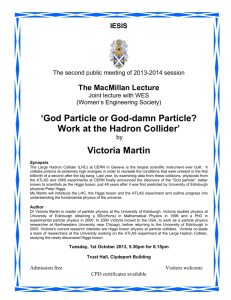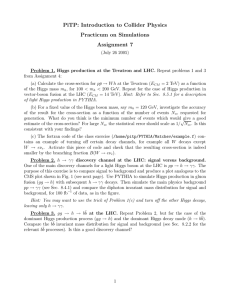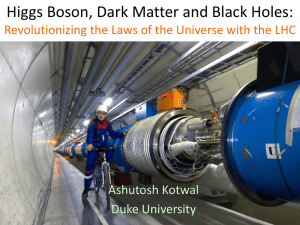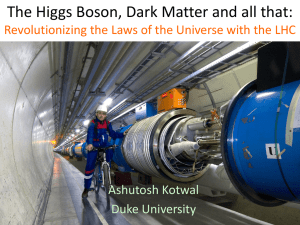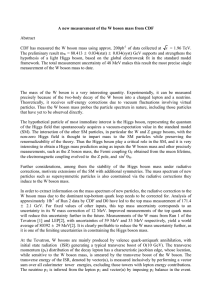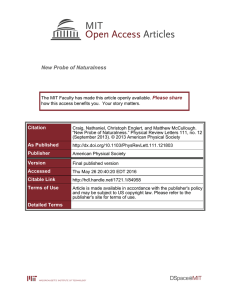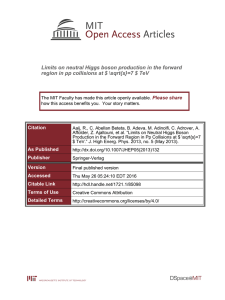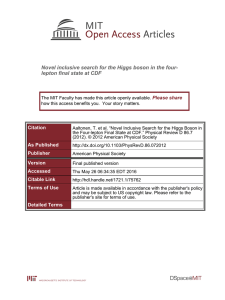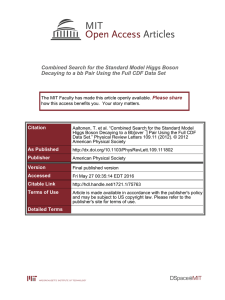Future Possibilities after Higgs Boson
advertisement
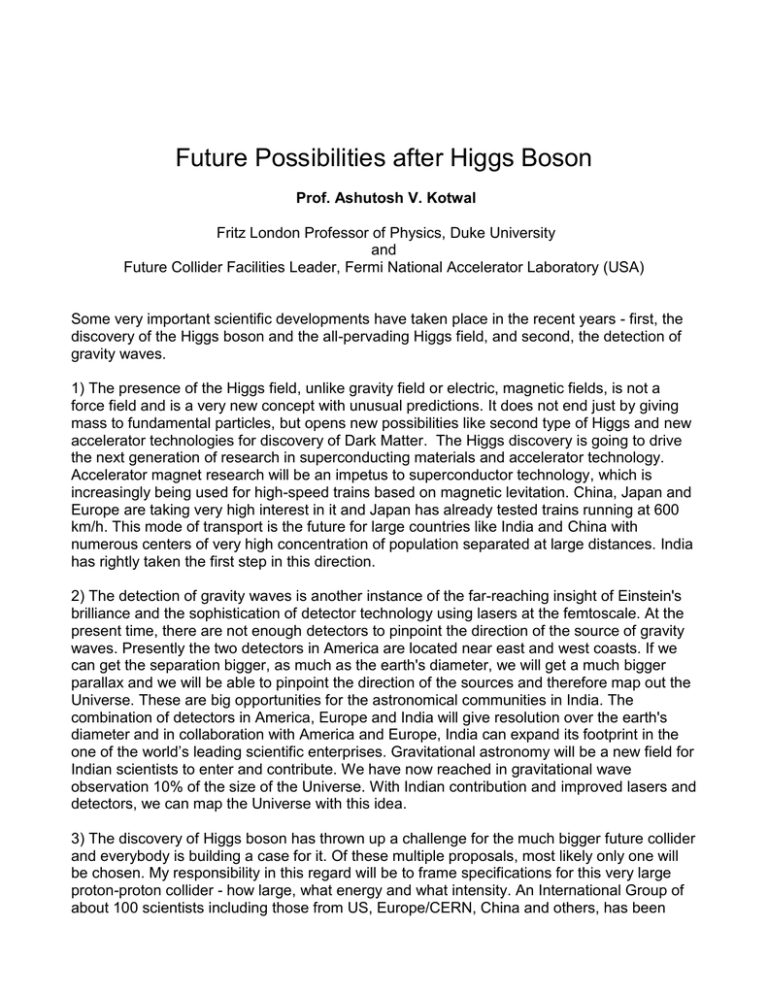
Future Possibilities after Higgs Boson Prof. Ashutosh V. Kotwal Fritz London Professor of Physics, Duke University and Future Collider Facilities Leader, Fermi National Accelerator Laboratory (USA) Some very important scientific developments have taken place in the recent years - first, the discovery of the Higgs boson and the all-pervading Higgs field, and second, the detection of gravity waves. 1) The presence of the Higgs field, unlike gravity field or electric, magnetic fields, is not a force field and is a very new concept with unusual predictions. It does not end just by giving mass to fundamental particles, but opens new possibilities like second type of Higgs and new accelerator technologies for discovery of Dark Matter. The Higgs discovery is going to drive the next generation of research in superconducting materials and accelerator technology. Accelerator magnet research will be an impetus to superconductor technology, which is increasingly being used for high-speed trains based on magnetic levitation. China, Japan and Europe are taking very high interest in it and Japan has already tested trains running at 600 km/h. This mode of transport is the future for large countries like India and China with numerous centers of very high concentration of population separated at large distances. India has rightly taken the first step in this direction. 2) The detection of gravity waves is another instance of the far-reaching insight of Einstein's brilliance and the sophistication of detector technology using lasers at the femtoscale. At the present time, there are not enough detectors to pinpoint the direction of the source of gravity waves. Presently the two detectors in America are located near east and west coasts. If we can get the separation bigger, as much as the earth's diameter, we will get a much bigger parallax and we will be able to pinpoint the direction of the sources and therefore map out the Universe. These are big opportunities for the astronomical communities in India. The combination of detectors in America, Europe and India will give resolution over the earth's diameter and in collaboration with America and Europe, India can expand its footprint in the one of the world’s leading scientific enterprises. Gravitational astronomy will be a new field for Indian scientists to enter and contribute. We have now reached in gravitational wave observation 10% of the size of the Universe. With Indian contribution and improved lasers and detectors, we can map the Universe with this idea. 3) The discovery of Higgs boson has thrown up a challenge for the much bigger future collider and everybody is building a case for it. Of these multiple proposals, most likely only one will be chosen. My responsibility in this regard will be to frame specifications for this very large proton-proton collider - how large, what energy and what intensity. An International Group of about 100 scientists including those from US, Europe/CERN, China and others, has been appointed to frame a Detailed Project Report (DPR) under my directions and submit it in two years to the CERN Council. The Report will lay out a time scale and directions for engineers, scientists and accelerator technicians. The Report has to come out strongly with incisive and winning case for future possibilities in research, detector characteristics, what particle signatures to look for, technological upgrades required in superconducting magnets, improvements in accelerator technology, particle energy and intensity requirements etc. and provide the basis for decision-making. At today's costing it could cost over US $30 billion. Our effort will be to reduce manufacturing costs by 3-4 times by improved technology. This improvement in technology goes into other applications also to make them cheaper. Cheaper high-power accelerators can be used for Thorium nuclear fission, which India has vast supplies of, and for transmutation of nuclear waste. Both are major steps for solving India’s growing energy needs, self-reliance in energy production and addressing environmental concerns from burning fossil fuels. 4) The group I headed has produced the world's best measurements of the masses of two fundamental particles, the Top Quark and the W Boson. These measurements have helped greatly in localizing the search for the Higgs boson or the commonly called “God Particle”. I also headed the group that made recommendations to upgrade the Large Hadron Collider (LHC) at CERN, Switzerland for higher intensity. My future research will further improve the accuracy of W boson mass to 0.01% from Fermilab data and later from LHC data to 0.005%. The W boson mass is sensitive to changes in the three fundamental forces at the subatomic level and is an extremely useful tool to identify new forces and particles. My group is currently spearheading the search for a second Higgs boson with LHC data. There will be several other possibilities thrown up by the upgraded LHC to further my research.



